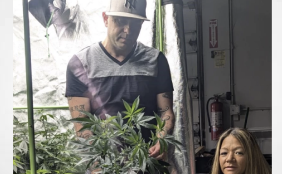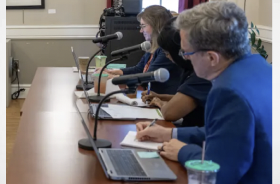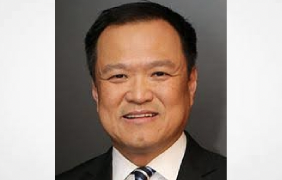Authored By Christopher M. McHugh and Andrew J. Goodwin
June 24, 2019
Kansas City – Relatively recently, the University of Missouri – using “a regression to obtain the predicted value of the fraction of population who are qualified patients” – attempted to predict the number of medical marijuana patients Missouri will have in the first three years of the state’s new medical marijuana program. The numbers it came up with – 19,000 in 2020, 22,500 in 2021, and 26,000 in 2022 (or about .5 percent of the population) – were strikingly low, much lower than those projected by the industry or indicated by recent patient numbers in states like Oklahoma, which has a patient count over 130,000, or three percent of the population, less than one year into its medical marijuana program.
It is possible MU may have greatly underestimated patient numbers because it failed to properly consider the legal differences and similarities between Missouri’s program and that of other states, such as:
- The definition of “qualifying condition.” In its analysis, MU may have given a much too conservative legal reading to the definition of “qualifying condition” in Article 14 of the Missouri constitution, on medical marijuana. While the MU study correctly pointed out that a Missouri resident must have a qualifying medical condition to legally purchase medical marijuana in the state, it failed to understand that – unlike many other states – Missouri’s definition of “qualifying condition” is not limited to a list of specific medical conditions, but ends with a catch-all provision, which states that any “medical condition” can be a “qualifying condition” if so designated by a physician in his or her “professional judgment.” This makes Missouri’s definition of qualifying condition one of, if not the most liberal in the country, and very similar to Oklahoma’s medical marijuana law, which allows a physician to recommend a patient for medical marijuana using “the accepted standards a reasonable and prudent physician would follow when recommending any medication to a patient.” But MU specifically excluded Oklahoma from the data set it used to estimate Missouri’s patient numbers because it concluded that Oklahoma’s “medical marijuana law is more liberal than Missouri’s …”
- Legal restraints on the types of marijuana sold. Missouri has placed no legal restrictions on the type of marijuana products that a dispensary can sell. In fact, the Missouri constitution now explicitly guarantees the right of patients to purchase marijuana raw flower, capsules, vaping products, extracts (concentrates), teas, oils, infused products, ointments, balms, transdermal patches, and even suppositories. In its study, however, MU used data from states with severe restrictions on the type of medical marijuana available for sale, without any attempt to adjust for those restrictions. For example, MU used patient counts in Minnesota in part to estimate Missouri’s patient numbers. But Minnesota prohibits the sale of any dried flower for smoking, which is by far the most popular marijuana product in both medical and adult use markets. In 2017, about 50 percent of all the state legal marijuana sold in Colorado, Washington, Oregon and California was raw flower.
- Tight legal restrictions on distribution. Missouri will at least initially have 24 dispensaries in each of its eight congressional districts, or 192 dispensaries statewide, which works out to about one dispensary for every 30,000 people. But MU’s analysis used data from some states with much tighter legal restrictions on retail distribution, which allow only very low numbers of dispensaries. For example, MU used patient data from Maine in part to try and estimate patient numbers in Missouri, but Maine’s medical marijuana law limits the number of dispensaries to only eight for the entire state, or about one dispensary for every 165,000 residents. Again, MU included no adjustment to try and correct for this difference.
- A detailed constitutional right. Many people do not realize the constitutional amendment legalizing medical marijuana in Missouri, passed overwhelmingly by ballot initiative last November, was not simply a paragraph or two but a 13-page single-spaced complete legal framework demanding the quick rollout of a medical marijuana program designed to ensure a steady supply of an array of medical marijuana products for Missouri residents. That type of program, enshrined in the state’s ultimate governing document – the constitution – gives a level of predictability and comfort to both Missouri marijuana businesses and patients alike because any future change to the law in Missouri of any substance is only possible through another constitutional amendment. Some other states have seen legislative and administrative “fiddling” with their marijuana laws by way of repeated statutory or regulatory changes. That is largely impossible in Missouri, as evidenced by the relatively quick defeat of all 10 marijuana bills introduced in Missouri after the passage of Amendment 2. Logically, this constitutionally mandated fast and stable rollout will result in higher patient numbers as well.
Consideration of and adjustment for all these legal differences would result in much higher patient estimates than those in MU’s study. In fact, given the similarities between Missouri and Oklahoma, it seems likely Missouri’s medical marijuana program will exceed MU’s patient estimate for the year 2022 (26,000) in its first six months. We won’t have to wait long to see who is right. The Missouri Department of Health and Senior Services will start accepting medical marijuana patient ID card applications on June 28, 2019.
Chris McHugh and Drew Goodwin lead Seigfreid Bingham PC’s Cannabis Law Practice Group, which is dedicated to helping plant touching and plant adjacent businesses meet all the different legal challenges in the marijuana and hemp industries.
This article is general in nature and should not be constituted as legal advice. Readers with questions should contact the authors of this article at 816-421-4460.

















